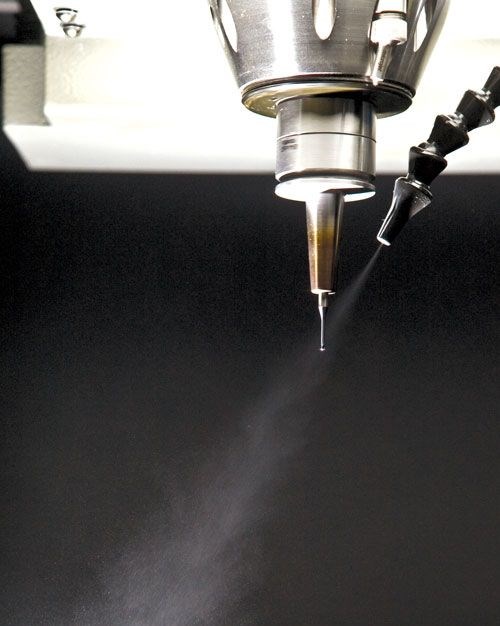MQL Explained: Articles and Video
Shops can benefit from MQL “clean machining” in a variety of ways.
Share




ECi Software Solutions, Inc.
Featured Content
View More


Takumi USA
Featured Content
View More.png;maxWidth=45)
DMG MORI - Cincinnati
Featured Content
View More
Shops can benefit from MQL “clean machining” in a variety of ways.
I recently got the chance to visit Ford’s Van Dyke transmission plant in Michigan to create an article about how it’s benefitted from minimum quantity lubrication (aka MQL). You might not think that a simple change in the way a tool and workpiece are cooled/lubricated would have such a dramatic effect on transmission component manufacturing, but it certainly has in Ford’s case. The article, which I’m currently writing, will appear in Modern Machine Shop’s October issue.
I’ve been sorta on an MQL kick here lately, so I figured I’d provide links to a few other articles we’ve published about MQL in addition to an instructional video that explains how a shop might get started with the near-dry machining technique. Check these out:
Understanding MQL — Minimum quantity lubricant can save money, improve tool life and improve the part finish. But it may involve changes to both the equipment and the processing strategy.
Toward More Seamless MQL — One of the small perils of a new technology is that it often involves new steps or new considerations that present special opportunities for error. MQL is a technology that exemplifies this point.
Complementary Technologies Make MQL More Accessible — An add-on system for MQL combines an external pump with repeatable control over nozzle position.
Video: Getting Started with Minimum Quantity Lubrication — MQL does not require a special machine tool or special tooling. This video makes the case for MQL and describes how to apply it effectively.
If your shop has recently begun integrating MQL, shoot me an e-mail. I’d like to hear about your efforts.












.png;maxWidth=150)















.jpg;maxWidth=300;quality=90)







